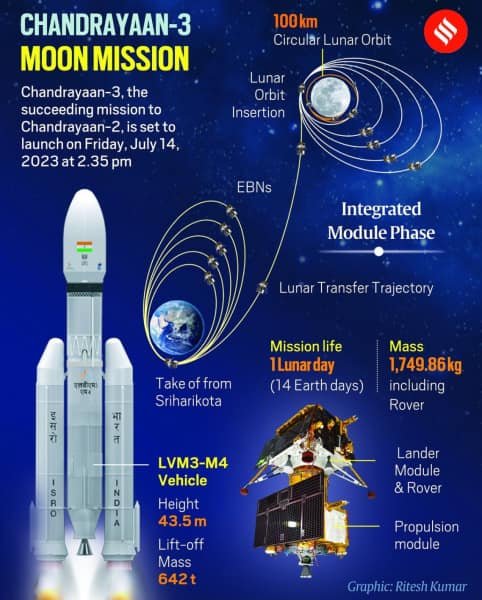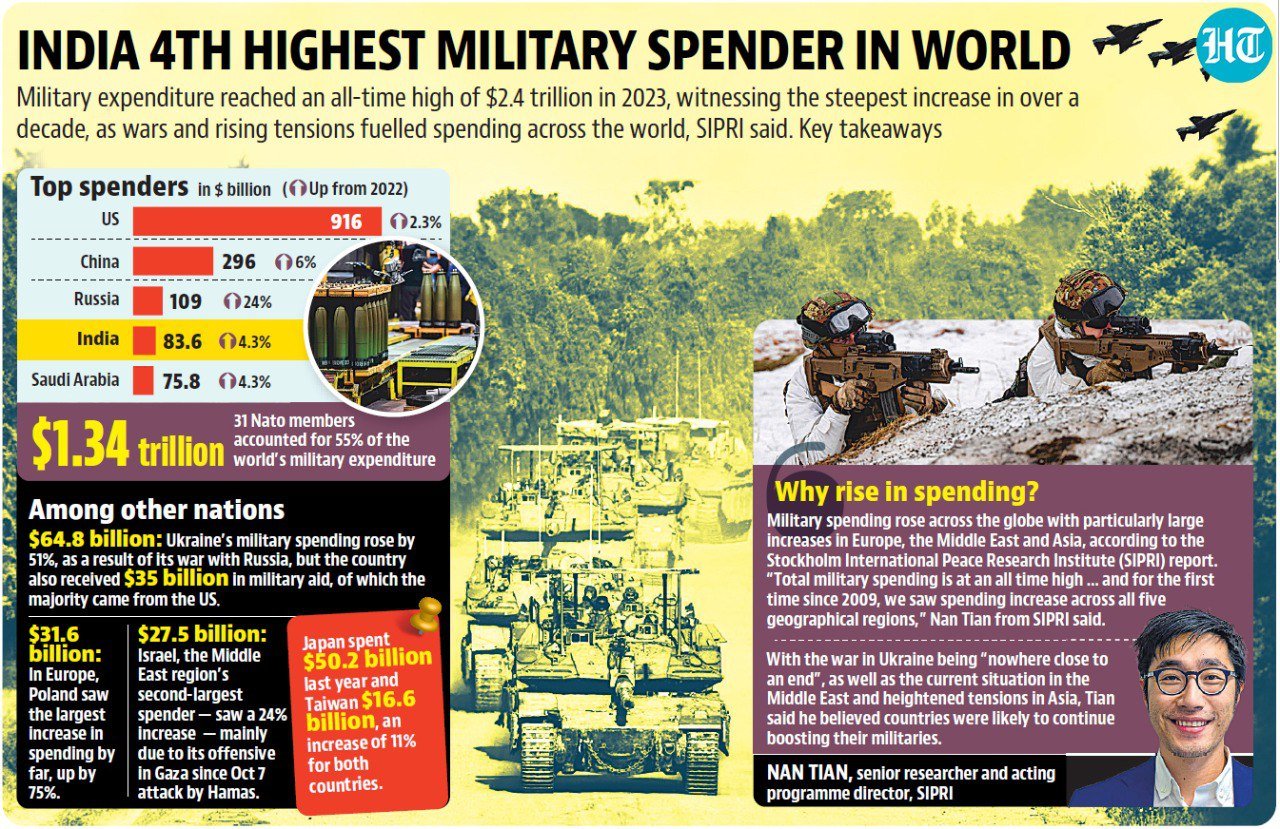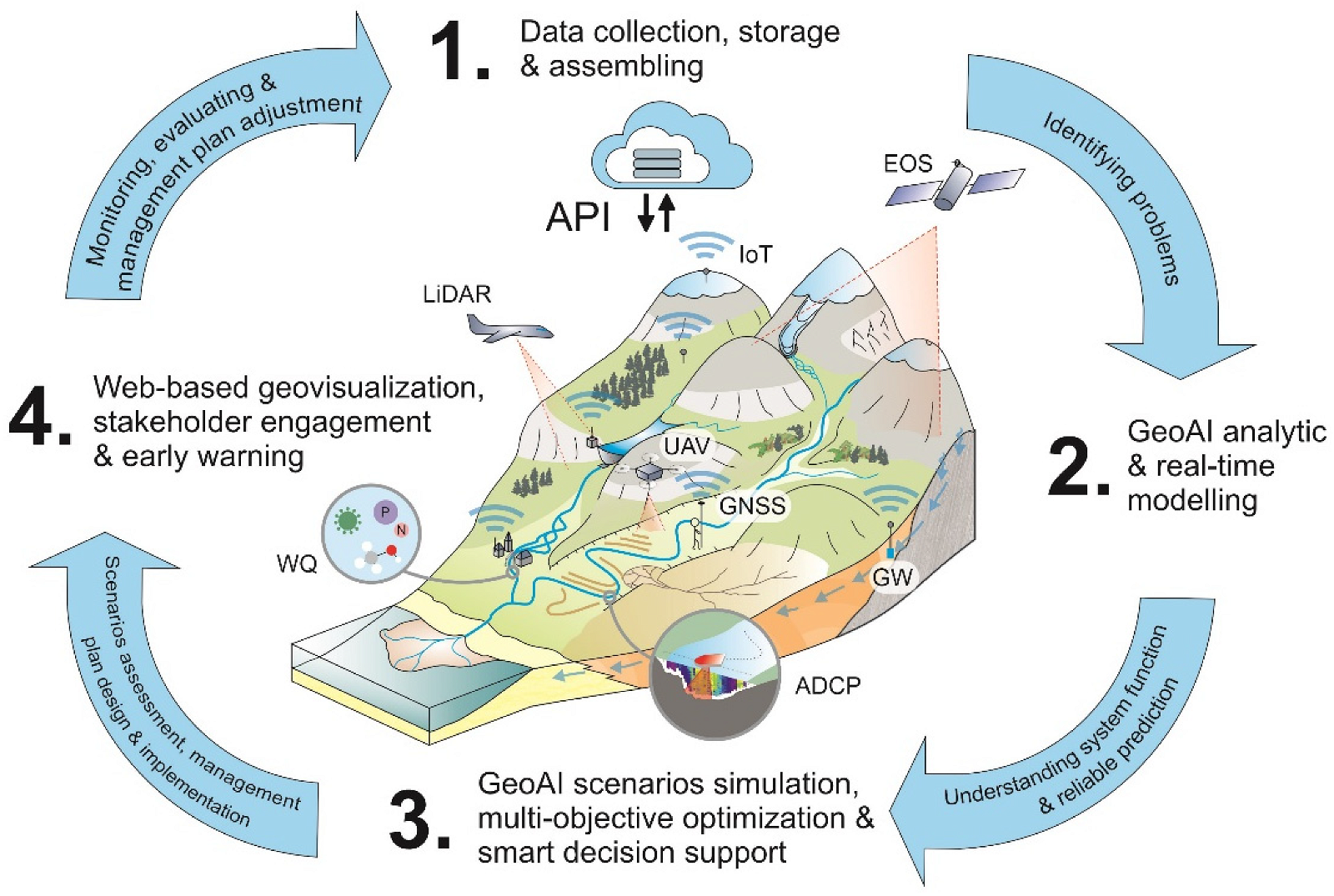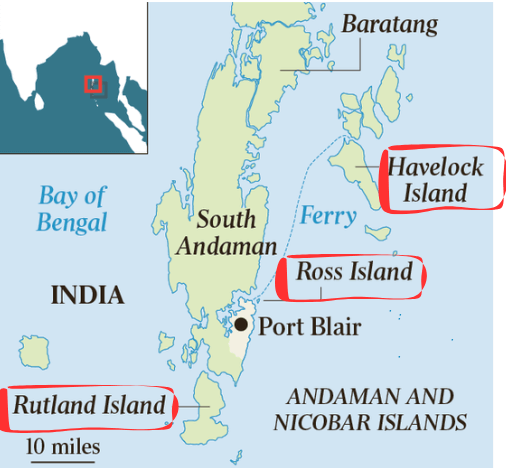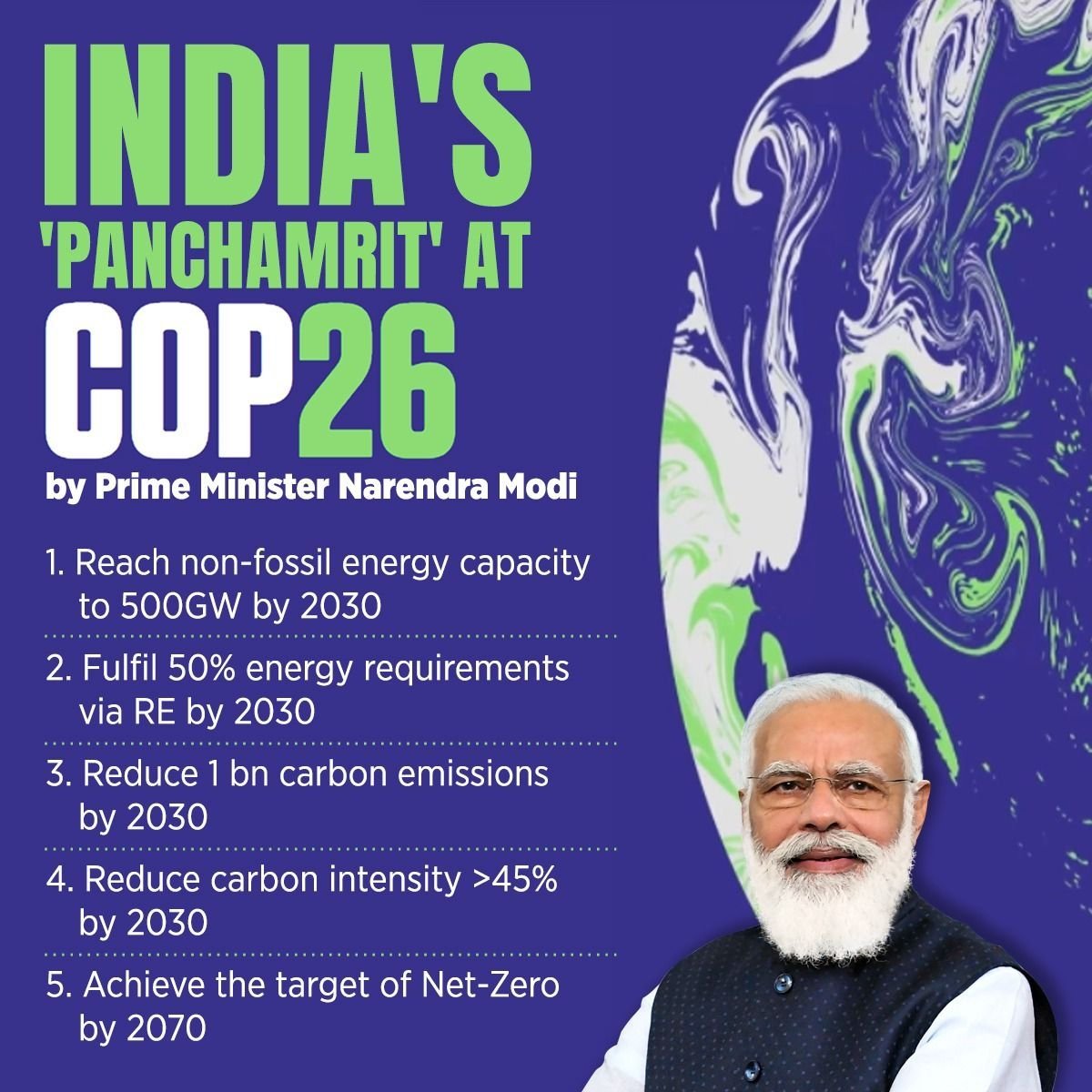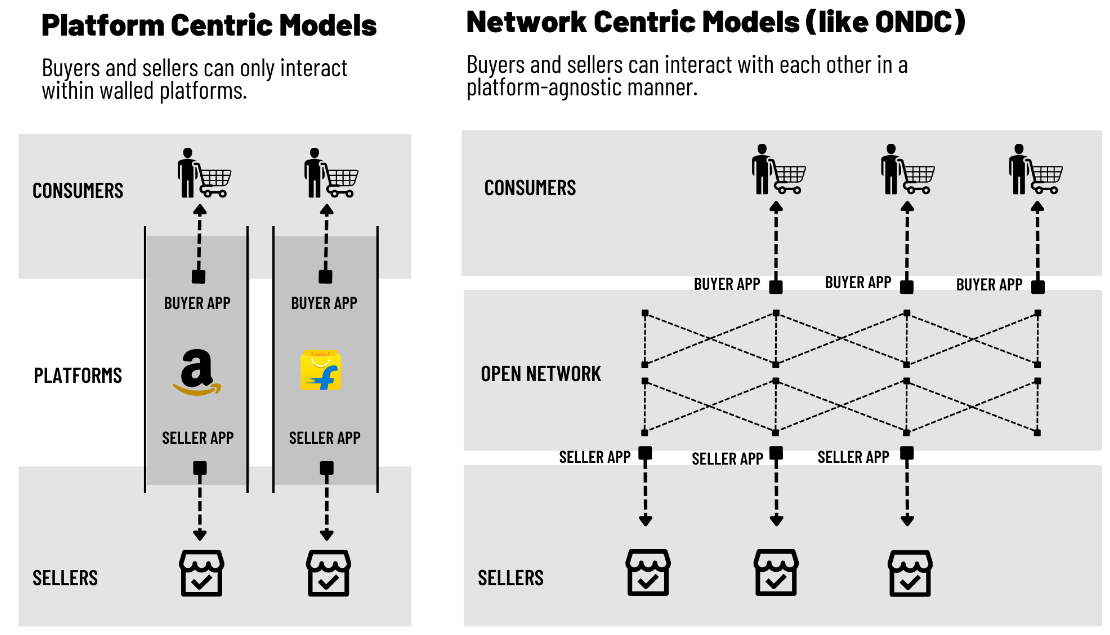
Current Affairs November 26-27, 2023: Super El Nino, Guru Nanak Dev Ji, Representation of Women in SC, Constitution Day, Governor, Transport Sector Decarbonisation, Kunming-Montreal Global Biodiversity Framework, Night Sky Sanctuary, Gene Therapy, Fathima Beevi
Subscribers of "Current Affairs" course can Download Daily Current Affairs in PDF/DOC
Subscribe to Never Miss an Important Update! Assured Discounts on New Products!
Must Join PMF IAS Telegram Channel & PMF IAS History Telegram Channel
{GS1 – Geo – PG – Climatology} Super El Nino
El Nino
- In normal conditions, trade winds blow east to west across the tropical Pacific Ocean.
- This happens due to the cold Peru Current (Humbolt Current), which creates a high-pressure area near the Peru Coast along the eastern Pacific Ocean.
- Moist air and warm surface waters flow westward from the eastern Pacific to the western Pacific, maintaining cool conditions in the central and eastern Pacific.
- This westward rising and eastward falling air movement over the Pacific is called Walker Circulation.
- El Nino is a climatic phenomenon of unusual warming of the eastern tropical Pacific Ocean.
- It results in low-pressure conditions in the eastern Pacific.
- El Nino is a part of the larger climatic phenomenon called El Nino-Southern Oscillation (ENSO).
- Both El Nino and La Nina last for 9 to 12 months, but some prolonged events may last for years.
- El Nino occurs every 3 to 5 years. It occurs more frequently than La Nina, but it is neither a regular event nor predictable.
|
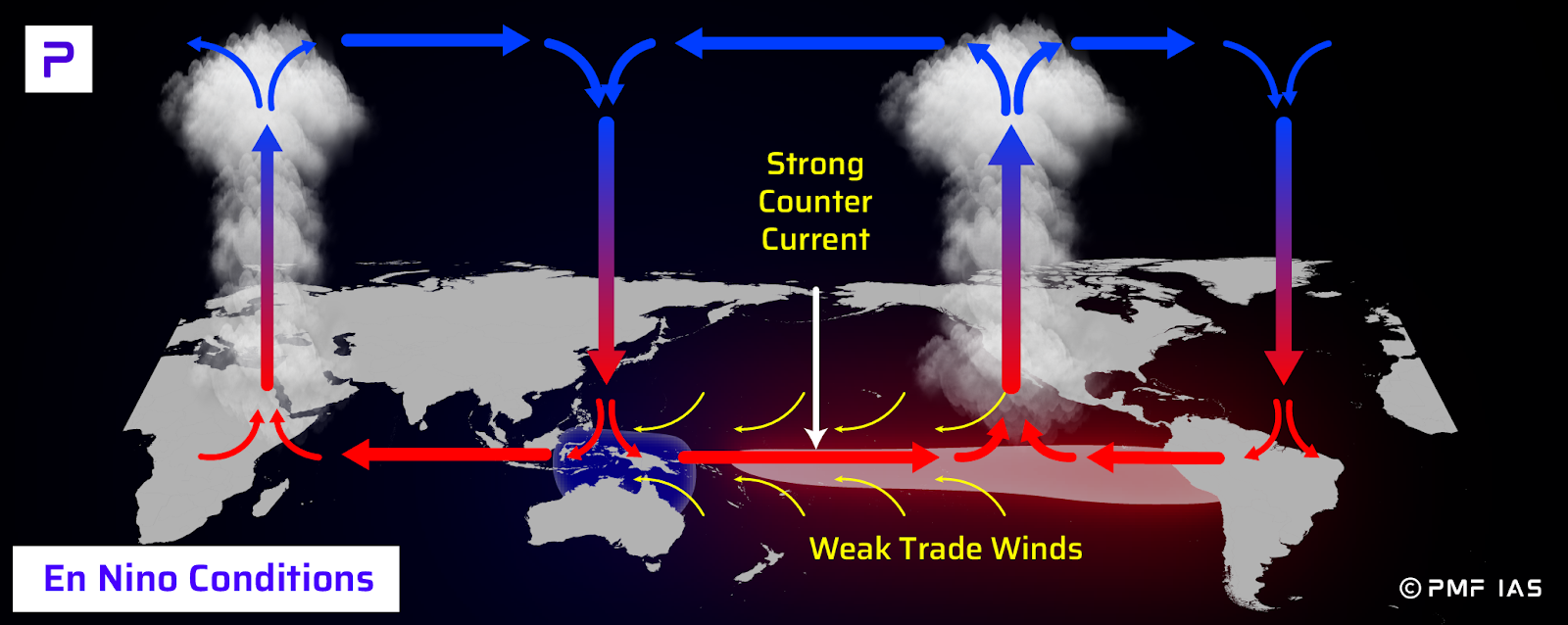
Implications of El Nino
- Prevailing easterly trade winds weaken and even reverse direction during the El Nino.
- It causes heavy rainfall and floods in Peru, Chile, Ecuador, and southern US.
- Cholera, dengue, and malaria increase in flooded areas.
- It causes droughts, wildfires and heatwaves in Australia, Indonesia, India, and southern Africa.
- Warmer ocean temperatures increase tropical cyclones in the eastern Pacific.
- Stable air over the Atlantic decreases tropical cyclones in the Atlantic.
What is Super El Nino?
- Super El Nino occurs when average sea-surface temperatures surpass 1.5°C in the central-eastern Pacific Ocean region. It is a rare event and will accentuate El Nino’s implications.
{GS1 – MIH – Personalities} Guru Nanak
- Context (PIB): President greeted fellow citizens on the eve of Guru Nanak Dev Ji’s birth anniversary.
- Baba Guru Nanak was born in Talwandi (Nankana Sahib in Pakistan) in 1469.
- He founded Sikhism in the late fifteenth century and was the first of the ten Sikh Gurus.
- He didn’t mean to start a new religion. However, his followers later created their own practices.
- He believed in the unity of the Godhead and the brotherhood of mankind.
- He condemned meaningless rites and rituals and preached belief in one God.
- To put his teachings into practice, Guru Nanak introduced the twin institutions of Sangat, congregation and Pangat, eating food from a free community kitchen.
- Before his death in 1539, Guru Nanak appointed Guru Angad as his successor.
Guru Granth Sahib
- It is the holy scripture of the Sikhs composed by many Sikh Gurus and Bhakti Saints.
- Guru Angad compiled the compositions of Guru Nanak, to which he added his own.
- The three successors of Guru Angad also wrote under the name “Nanak,” and all their compositions were compiled by Guru Arjan (Fifth Guru) in 1604.
- The writings of figures like Shaikh Farid, Sant Kabir, Bhagat Namdev, and Guru Tegh Bahadur were added to this compilation.
- In 1706, this compilation was authenticated by Guru Gobind Singh, known as Guru Granth Sahib.
{GS2 – Polity – IC – Judiciary} Representation of Women in SC
- Context (IE): Out of 268 judges in the history of the SC, only eleven have been women, which is a mere 4.1% of all SC judges.
- In 2021, for the first time in history, three females were appointed to the SC in one go.
- Currently, out of the 33 judges in SC, only three are female, namely, Justices Hima Kohli, Bela Trivedi, and BV Nagarathna.
- Justice Nagarathna is in line to become the first-ever female CJI on September 25, 2027.
Representation of women in HC
- Currently, 13% of all HC judges are female.
- Currently, none of the country’s 25 HCs has a female chief justice, barring the Gujarat HC.
Representation of women in the lower judiciary
- A 2018 study by the Vidhi Centre for Legal Policy found that representation of women in the lower judiciary is relatively higher at 27%.
Reservation in Appointment of Judges
- Appointments to the higher judiciary are made under Articles 124, 217, and 224 of IC, which don’t provide reservation for any caste or class of persons.
- Though there is no reservation for women in the higher judiciary, several states have provided quotas for women in the lower judiciary.
- These states provide quotas for women between 30% and 35% of the total seats, for which recruitment is done through direct appointment.
Article 124 of IC
Article 217 of IC
|
Reasons for the lack of female representation in the judiciary
- Old boys’ club mentality makes it harder for women to lobby for judicial posts.
- Clients not trusting women advocates with high-stake cases.
- Lack of supportive infrastructure.
- Appointment by collegium: The lower judiciary is better than the HC and SC; that’s perhaps because entry to the lower judiciary is through an examination.
{GS2 – Polity – IC – Misc} Constitution Day
- Context (TH): Constitution Day is celebrated on 26 November to mark the adoption of the Constitution of India by the constituent assembly in 1949.
- The Constitution of India, or the Indian Constitution (IC), is India’s supreme law.
- It is a written document that lays down the framework demarcating the
- fundamental basic code,
- structure, procedures, powers, and duties of the Government and its organisations and
- the rights and duties of the citizens.
- At the time of its adoption, the Constitution contained 395 Articles and eight Schedules and was about 1,45,000 words long, making it the longest national Constitution ever adopted.
Constitution as a Living Document
- IC is neither inflexible nor rigid, providing enough flexibility in its operations to adjust to changing needs and circumstances.
- To date, the Constitution has been amended 106 times.
- At present, it contains 395 Articles and twelve Schedules.
Highlights of the IC
- The preamble of the IC declares India a sovereign, socialist, secular, democratic republic. It assures its citizens justice, equality, and liberty and endeavours to promote fraternity.
- The IC provides for a Parliamentary form of government, which is federal in structure with certain unitary features.
- As per Article 79 of the IC, the council of the Parliament of the Union consists of:
- The President.
- Two Houses:
- The Council of States (Rajya Sabha)
- The House of the People (Lok Sabha)
- The constitutional head of the Executive of the Union is the President.
- Article 74(1) of the IC provides a Council of Ministers, with the PM as its head, to aid and advise the President, who must exercise his/her functions according to the advice.
- The real executive power is thus vested in the Council of Ministers, with the PM as its head.
Interesting facts about the IC
- The IC is neither printed nor typed. It is handwritten and calligraphed in both Hindi and English.
- The original Constitution of India was handwritten and calligraphed by Prem Behari Narain Raizada.
- Shantiniketan artists, including Beohar Rammanohar Sinha and Nandala Bose, decorated every page.
- Twenty-two languages are recognised by the IC as scheduled languages.
Functions of the Constitution
- Provide a set of basic rules that allow for minimal coordination amongst members of a society.
- Specify who has the power to make decisions in a society.
- Limit what a government can impose on its citizens. These limits are fundamental, establishing a boundary the government must never cross.
- Enable the government to fulfil the aspirations of a society and create conditions for a just society.
Supremacy of Constitution
- In a parliamentary democracy, the Parliament represents the people and is expected to have the upper hand over the Executive and Judiciary.
- However, the Constitution outlines specific powers for these other branches of government.
- Hence, the Constitution of India is supreme; neither the Judiciary, the Executive, nor the Parliament holds supremacy.
Constitutionalism
- Constitutionalism refers to the idea that the government should adhere to the principles and rules outlined in the Constitution.
- Constitutionalism refers to efforts to limit the power of government and prevent arbitrary actions.
Prominent examples of Constitutionalism
- SC’s NALSA judgment: Recognised the rights of the third gender.
- SC’s Navtej Singh Johar case: Ended the criminalisation of homosexuality.
Constituent Assembly
- M.N. Roy was the first Indian to introduce the concept of a Constituent Assembly in 1934.
- B. N. Rau was the legal advisor of the Constituent Assembly.
- The members of the Constituent Assembly sat for eleven sessions and 167 days to frame the IC over a period of two years, eleven months and eighteen days.
- The Assembly met for the first time on 9 December 1946; its last session was held on 24 January 1950.
- The Constituent Assembly adopted the constitution on 26 November 1949 and came into force on 26 January 1950.
- On January 24, 1950, 284 members of the Constituent Assembly were present and signed the IC.
- Dr. Rajendra Prasad, the first President of India, became the first person to sign the IC.
{GS2 – Polity – IC – Separation of Powers} Governor
- Context (TH): The SC has laid down the law that:
- The Governor cannot keep a Bill pending indefinitely without any action.
- The Governor, in case he withholds assent, should send back a Bill forwarded to him by a State Legislature “as soon as possible” with a message to reconsider the proposed law.
- The court held that a Governor who withholds a Bill without doing anything further would be acting in contravention of the Constitution.
- After this SC ruling, the governor has no choice or discretion and must give his assent to it.
Article 200 of IC
- When a Bill passed by the State Legislative Assembly is presented to the Governor, the Governor can choose to:
- Give assent to the Bill.
- Withhold assent (only for a limited duration, according to the SC)
- Reserve the Bill for the President’s consideration.
- It also provides that the Governor may, as soon as possible after the presentation of the Bill to him for assent, return it requesting that the House reconsider the Bill itself or any of its provisions.
- If a returned Bill is passed by the House again, the Governor can either:
- Give assent to the Bill.
- Reserve the Bill for the President’s consideration.
President’s Decision on Reserved Bills
- When a Governor reserves a Bill for the President’s consideration, the President can:
- Give assent to the Bill.
- Withhold his assent.
- Return the bill to the State Legislature (If it is not a Money Bill)
- The Legislature must review the Bill within six months of receiving it.
- If the State Legislature passes it again, it is again presented to the President for reconsideration.
- Even now, the President has no obligation to give his assent to the Bill.
Effect of SC Order
- Now, whenever the Governor withholds assent, he must send the Bill back to the legislature for reconsideration.
- If the State Assembly reiterates the Bill “with or without amendments”, the Governor has no choice or discretion and must give his assent to it.
- This effectively means that the Governor either grants assent in the first instance or will be compelled to do so after the Bill’s second passage.
{GS3 – Envi – Air Pollution} Transport Sector Decarbonisation
- Context (TH): Given the frequent red zone Air Quality Index (AQI) levels in Indian cities this year, prioritising fleet electrification is crucial to combat urban pollution.
Contribution of Road Fleet to Air Pollution
- Truck fleet consumes over 25% of Indian oil imports and generates over 90% of road transport CO2 emissions.
- Furthermore, the transport and construction sectors significantly contribute to urban smog through PM2.5 and PM10 pollution.
- The truck fleet is projected to increase as India, as an emerging economy, expands its road network.
Ways for Decarbonisation of Transport Sector
Fleet Electrification
- Fleet electrification by transitioning to electric-trucks in the need of the hour.
- India has achieved over 50% electric vehicle penetration in three-wheelers, a significant milestone for India’s 2070 net-zero agenda.
- India’s electric vehicle penetration rate has crossed the 6% mark.
- But electric truck penetration remains a challenge even though it is most important for decarbonising the transport sector.
|
Major Challenges in Fleet Electrification
- Upfront cost: A mid-range electric truck in India costs around ₹1.5 crore compared to about ₹40 lakh for a diesel truck.
- Cost of charging logistics
Solution to Achieve Fleet Electrification
- Innovative financial instruments
- Incentivisation of charging infrastructure
- Conducive regulatory environment
Green Freight Corridors
- Green freight corridors are designated routes where zero-emission transport feasibility is enhanced through collaborative public and private efforts.
- Designating certain expressways and national highways as green freight corridors will showcase a demonstration effect nationwide.
- These corridors may initially develop in 500 km stretches focusing on routes with heavy truck traffic.
{GS3 – Envi – Biodiversity} Kunming-Montreal Global Biodiversity Framework
- Context (DTE): In the 25th meeting of the SBSTTA, recommendations were made to implement the Kunming-Montreal Global Biodiversity Framework (KMGBF).
Subsidiary Body on Scientific, Technical and Technological Advice (SBSTTA)
|
What is Kunming-Montreal Global Biodiversity Framework (KMGBF)?
- KMGBF was adopted in the 15th COP to the UN Convention on Biological Diversity (CBD).
- It set goals and targets for protecting biodiversity and halting its loss.
- The framework, which is not legally binding, sets out 4 goals for 2050 and 23 targets for 2030.
Four Goals for 2050
- Ecosystem maintenance, preventing human-induced extinctions, and preserving genetic diversity.
- Biodiversity is sustainably used and managed.
- Fair and equitable sharing of monetary and non-monetary benefits from genetic resource utilisation.
- Adequate means for Kunming-Montreal GBF implementation and equitable access for all Parties.
23 targets for 2030
Targets for Reducing Threat to Biodiversity
- Halting biodiversity loss: By minimising the impact on areas of high biodiversity importance while respecting indigenous peoples’ rights.
- Effective restoration: Restore at least 30% of degraded terrestrial, inland water, coastal, and marine ecosystems.
- 30×30 target: 30% of the Earth’s terrestrial, inland water, coastal, and marine areas to be conserved by establishing protected areas (PAs) and other area-based conservation measures (OECMs) by 2030.
- Saving endangered species: Urgent action to prevent human-induced extinction, ensuring diversity through in-situ and ex-situ conservation.
- Wild species protection: Promoting sustainable, safe, and legal use, preventing overexploitation.
- Invasive alien species: Mitigating impacts by cutting introduction rates by 50% and controlling them in priority sites like islands.
- Addressing pollution: Minimise pollution risks to levels safe for biodiversity and ecosystem functions.
- Climate crisis: Minimise impact through nature-based solutions for climate change.
Targets for Meeting Human Requirements Through Sustainable Use
- Serving humans: Ensure the sustainable use of wild species benefits people, especially those most reliant on biodiversity.
- Ecosystem management: Sustainable management of agriculture, aquaculture, fisheries, and forestry areas for resilience and long-term productivity.
- Preserving nature’s contributions: Restore, maintain, and enhance nature’s contributions to water and climate.
- Urban biodiversity: Enhance the quality, connectivity, and accessibility of green and blue spaces in urban areas.
- Sharing genetic resources: Implement legal, policy, administrative, and capacity-building measures for equitable sharing of genetic resource benefits.
Targets for Tools and Solutions for Implementation and Mainstreaming
- Policy-making: Integrate biodiversity and its values into policies at all government levels and sectors.
- Business legal compliance: Transnational firms regularly assess biodiversity risks, dependencies, and impacts, reporting on regulatory compliance.
- Eco-friendly choices: Encourage sustainable consumption to reduce the global footprint.
- Biosecurity measures: Adopt steps for handling biotechnology and distributing its benefits.
- Removing harmful incentives: Identify and eliminate/reform biodiversity-harming incentives by 2025; reduce them by $200 billion annually by 2030.
- Biodiversity finance: Mobilising $200 billion annually by 2030.
- Technical cooperation: Strengthen capacity building, technology access, and transfer.
- Knowledge sharing: Provide information to decision-makers, practitioners, and the public; access indigenous technologies only with their consent.
- Equal representation in decision making
- Gender-responsive approach: Recognising women’s rights and access to natural resources.
Protected Areas
Other Effective area- based Conservation Measures (OECMs)
|
Key Points of the 25th Meeting of the SBSTTA
- Role of invasive species and climate change in biodiversity loss: According to the IPBES report, invasive alien species (IAS) play a key role in 60% of global plant and animal extinctions.
- Intergovernmental Panel on Climate Change 6th Assessment Report (IPCC AR6) suggested that climate change is the main driver of the loss of biodiversity
- Interdependent crisis: Recognition that biodiversity loss, climate change, IAS, pollution, etc., are interdependent crises that must be addressed coherently and in a balanced way.
- Role of other multilateral agencies: Agencies such as WHO and the FAO should be used to enrich the scientific and technical advice towards implementing the KMGBF.
Intergovernmental Science-Policy Platform on Biodiversity and Ecosystem Services (IPBES)
|
{GS3 – S&T – Astronomy} Night Sky Sanctuary
- Context (PIB): Ladakh will soon have South East Asia’s first Night Sky Sanctuary.
- The sanctuary is being set up with the help of the Indian Institute of Astrophysics, Bengaluru.
- The Dark Sky Reserve will come up within the Changthang Wildlife Sanctuary in Ladakh.
- It will be called Hanle Dark Sky Reserve (HDSR).
- It will be adjacent to the Indian Astronomical Observatory, the second-highest optical telescope in the world, of the Indian Institute of Astrophysics at Hanle
What is a Dark Sky Reserve?
- A Dark Sky Reserve is public or private land with a distinguished nocturnal environment and starry nights developed responsibly to prevent light pollution.
- It is a tract of land or region with minimal artificial light interference.
- The International Dark Sky Association is a US-based non-profit that designates places as International Dark Sky Places, Parks, Sanctuaries and Reserves, depending on the criteria they meet.
Why was Ladakh Chosen for the Project?
- Ladakh’s sparse vegetation, high elevation, and low population density make it ideal for long-term astronomical observatories and dark sky locations.
- Clear skies and low atmospheric water vapour make Ladakh an excellent site for astronomical observations.
- It will promote astro tourism and lift Ladakh’s economy.
{GS3 – S&T – BioTech} Gene Therapy
- Context (IE): The UK drug regulator has approved a gene therapy to cure sickle cell disease and thalassaemia.
Sickle Cell Disease (SCD)
- SCD is a group of inherited red blood cell (RBC) disorders that affect haemoglobin, the protein that carries oxygen through the body.
- Normally, RBCs are flexible disc-shaped cells that move easily through blood vessels.

- In SCD, RBCs become crescent or sickle-shaped due to a genetic mutation of haemoglobin.
- These sickled RBCs do not bend or move easily and can block blood flow to the rest of the body.
- The symptoms manifest in people who inherit a pair of damaged genes from both parents.
- Those who carry only one copy of the gene from one parent can lead a normal life.
- Symptoms/complications of SCD: Pain crisis, anaemia, jaundice, stroke, organ failure etc.
- Treatment: A blood and bone marrow transplant was the only cure for SCD, but it was not for everyone because of the dearth of donors and the associated risk.
|
Sickle Cell Anaemia (SCA)
|
Thalessemia
- Thalassemia is an inherited blood disorder resulting from insufficient production of haemoglobin.
- Haemoglobin, a protein, is an important part of red blood cells (RBCs).
- RBCs carry oxygen through the body with the help of haemoglobin.
- Without haemoglobin, RBCs do not last long.
- Symptoms: Fatigue, shortness of breath, and irregular heartbeats.
- Treatment: Blood transfusions throughout life.
- Complication: Transfusions cause excess iron buildup, necessitating chelation therapy.
Gene Therapy for SCA
- This is the first licensed therapy in the world based on Crispr-Cas9 or genetic scissors.
- CRISPR-Cas9 is a gene-editing therapy that won the Nobel Prize in Chemistry in 2020.
- Called Casgevy, the therapy uses CRISPR-Cas9 to cut and edit the faulty gene.
- The therapy uses the patient’s own blood stem cells.
- Foetal haemoglobin, present at birth, lacks abnormalities in adult haemoglobin.
- The therapy boosts foetal haemoglobin production, alleviating symptoms in both conditions.
- It is a one time treatment offering a potential cure for a lifetime.
Why Gene Therapy for SCA is Significant for India?
Sickle Cell Disease (SCD)
- India has the second-highest disease burden of SCA globally after African countries.
- An estimated 30,000-40,000 children in India are born with the disorder every year.
- It is more prevalent among India’s tribal population.
- SCA is highly prevalent in 15 Indian states, with Maharashtra leading in incidence.
Thalessemia
- India has the largest number of children with Thalassemia major in the world.
- About 10,000 -15,000 babies with thalassemia major are born every year.
{Prelims – PIN} Fathima Beevi
- Context (TH): Justice Fathima Beevi was the first female judge of the SC when appointed in 1989.
- She was also the first Muslim woman Judge to be appointed to any Higher Judiciary.
- After retiring from the apex court in 1993, She served as the Governor of Tamil Nadu and a member of the National Human Rights Commission.





![PMF IAS Environment for UPSC 2022-23 [paperback] PMF IAS [Nov 30, 2021]…](https://pmfias.b-cdn.net/wp-content/uploads/2024/04/pmfiasenvironmentforupsc2022-23paperbackpmfiasnov302021.jpg)
